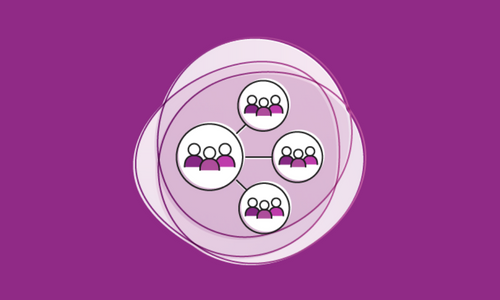E-Commerce for Reproductive Health Supplies: Family Planning in the Digital Age
IRH partnered with seven organizations to examine the current extent of reproductive health (RH) supplies’ availability via e-commerce, and the likelihood for future expansion through a series of seven case studies and an overview report. Each case study focuses either on a specific country (India, Kenya, Mexico, and the United States) or one new and underutilized RH technologies (emergency contraception, female condoms, and the Standard Days Method®) at the global level. The four country case studies share a common theme of rapid increases in internet availability and use, especially through advancements in mobile technology. The three studies of underused FP methods highlight how their unique characteristics affect their potential for online expansion. For each of the methods, we identified potential benefits for distribution through e-commerce, which increases visibility, product information, and access.
This series of cases illustrates the current extent of RH supplies’ availability via e-commerce and the likelihood of expanding it in the future. It also provides insight into the hindering and enabling factors that exist within and across different settings and for diverse family planning methods globally, explores findings concerning e-commerce infrastructure and regulatory issues, and presents possible areas for future research.
Keywords: RHSC, ecommerce, e-commerce
Overview Report: E-commerce and RH Supplies
Customers around the world are connecting to the internet and finding a world of products and services available at their fingertips. Over 46% of the world’s population went online in 2015, many of them to shop. With the click of a button and a payment mechanism, customers can buy almost anything. The size of the overall global e-commerce marketplace is enormous; business-to-consumer (B2C) online sales reached an estimated US $1.5 trillion by the end of 2014. Given this phenomenal growth, RH supplies and information have also become more available online, giving customers new channels to obtain these essential products and services. Our findings demonstrate that trends in infrastructure (broadly defined to encompass all aspects of provisioning from internet search to product delivery), regulations of all kinds, information availability, and customer profiles and preferences are key factors that drive the availability of RH supplies online. While the specific nature of these factors vary by country and method, each is crucial in determining the type and scale of RH supplies online. All of these factors are expected to remain important in the near future.
E-commerce of RH Supplies in India
India’s enormous potential market size for RH supplies suggests a proportionately large potential for obtaining these products through e-commerce. India’s RH e-commerce market—dominated by male condoms—is vibrant but quite small — less than $2 million compared to the estimated $100-$130 million in conventional channels for RH sales. However, e-commerce appears to be growing and sellers now offer five spacing methods online. Investment is expanding in both internet infrastructure and online markets. Despite this investment, there are constraints to further growth, including lower delivery capacity in rural areas and competition from free government and subsidized, socially marketed RH supplies. In addition, while electronic payment systems such as mobile wallets are increasing, cash-on-delivery payment is the most prevalent (45% of transactions), with implications for future expansion. Customers’ concerns about privacy at clinics and pharmacies may drive them toward online sales, but they also have concerns about privacy at the delivery stage. In response, many companies are taking measures to protect customer anonymity. This case study sheds light on opportunities and obstacles to e-commerce as a way of expanding access to RH supplies.
E-commerce of RH Supplies in Kenya
Half of Kenya’s population is now online, with significant increases in internet users, attributed to the reduction in data bundle prices and availability of affordable internet-enabled phones. The estimated value of e-commerce in Kenya is $42.2 million. While data is limited and e-commerce is still relatively new, it is likely to expand rapidly. This could imply potential growth across other African nations. Despite the availability of a wide range of FP methods from public and private health facilities, pharmacies, and other outlets Kenya has a contraceptive prevalence rate of 60.9% for use of modern FP methods, well below the target of 70% set by the Kenyan Ministry of Health for 2015. The internet has the potential to provide wider access to FP, but data on online access to RH supplies is very limited. There are three online pharmacies, but only one sells FP products, not including male condoms. In addition, three other online sources of male condoms were found. Although e-commerce is relatively new and very small, the e-commerce market for RH supplies appears to have potential for expansion.
E-commerce of RH Supplies in Mexico
E-commerce in Mexico is expanding rapidly, with more than half of the country online and a total market value of more than $12 billion. The potential market for online sales of RH supplies depends on several factors, including current and future use of methods suitable for distribution via the internet. More than 75% of women in Mexico who use contraception use permanent and long-acting reversible contraceptive methods (LARCs) that require a clinician for insertion. Only 23% of women use non-clinical short-acting methods that are suitable for online sale, and young adults are more likely to use the short-acting,“internet-friendly” methods than their older counterparts. Despite some problems, in particular, cumbersome search protocols and the lack of adequate information, a wide range of hormonal and barrier methods appear to be readily available online, most without a prescription. Further, Mexico’s e-commerce market is primarily used by younger age groups. As Mexico’s large youth age cohorts enter early adulthood, there is a clear potential for an increase in clients who obtain RH supplies through e-commerce, especially short-acting FP methods.
E-commerce of RH Supplies in the U.S.
The U.S. has rapidly moved toward e-commerce, and “retailers in nearly every sector are investing in capabilities to meet growing shopper demand to purchase goods via e-commerce.” The U.S. Census Bureau valued the 2014 e-commerce market at nearly $300 billion, accounting for 6% of the $5 trillion overall U.S. retail market. While brick-and-mortar transactions continue to dominate the U.S. retail market, e-commerce is making significant headway with sales growing 15% annually and likely to double every five years. As a result, a number of e-commerce interventions to connect customers to their preferred contraceptive method have emerged in recent years. Meanwhile, demand in the U.S. for FP products is substantial and steady. According to the Center for Disease Control (CDC), for the period 2011-13, 90% of the 43 million American women seeking to avoid pregnancy used contraceptives. As a robust and developed e-commerce market with a high proportion of contraceptive users, e-commerce holds the potential for expanding contraceptive access not only by reaching new customers but also by expanding product options. A number of e-commerce interventions for connecting customers to their preferred contraceptive method have emerged in recent years.
E-commerce and Emergency Contraception
EC is an important “second-chance” contraceptive method widely available around the world. It is generally available without a prescription, but some forms of the medication still require one in some countries. This research confirmed that EC can be purchased online in a number of European, North American and South American countries, as well as in some Asian countries; there was no evidence of online access in Africa. Currently EC is sold online through several mechanisms, including e-commerce marketplaces (such as Amazon.com),and pharmacy chains that sell medical products online. For various reasons, EC is not available online in some European and other countries. Key challenges that emerge include the cost of the drugs and shipping, stigma (around online sales of medicines and RH supplies), and, prescription requirements. In restricted environments where EC is not available through normal channels, online access offers unique opportunities for women to access EC.
E-commerce and Female Condoms
Several female condoms stakeholders (advocates, manufacturers and retailers) use e-commerce to distribute this product, while others have expressed an interest in using e-commerce in the future. Female condoms are currently sold online in India, China, the Netherlands, and the U.S. Most customers live in the U.S., Europe, China and large cities in countries such as India and Nigeria. In these places, customers benefit from the growing number of female condom brands available online (frequently a greater number of options than at their local pharmacy) and the ease and privacy of online ordering. The female condom market has historically been dominated by onebrand; the emergence of new female condom products is likely to lead to wider distribution and/or lower prices, increasing the viability of e-commerce. Female condoms are available via e-commerce on a global scale, but this does not mean that they are purchased via e-commerce on an equally large scale.
E-commerce and CycleBeads®
This case study report reviews the experiences, opportunities and challenges of e-commerce as it relates to the RH product, CycleBeads®. The physical CycleBeads are, in some ways, an ideal product for the internet age – small, lightweight, non-prescription, with a long shelf-life. However, their international distribution is limited by logistical barriers such as few distributors, high international shipping costs, and a difficult revenue model with a product that is a low cost, one-time purchase. In contrast, the digital forms of CycleBeads are more easily made available worldwide and can be accessed directly online, through dedicated websites or marketplaces such as Google Play and iTunes. E-commerce has made it possible for potential customers to find out about the product and procure it even when it is not readily available in their local healthcare or retail setting. E-commerce has also provided a resource for information and support for existing and potential customers.
 Where We Work
Where We Work  Press Room
Press Room  FACT Project
FACT Project  Passages Project
Passages Project  Learning Collaborative
Learning Collaborative  Search All Resources
Search All Resources  Social Norms
Social Norms  Fertility Awareness Methods
Fertility Awareness Methods